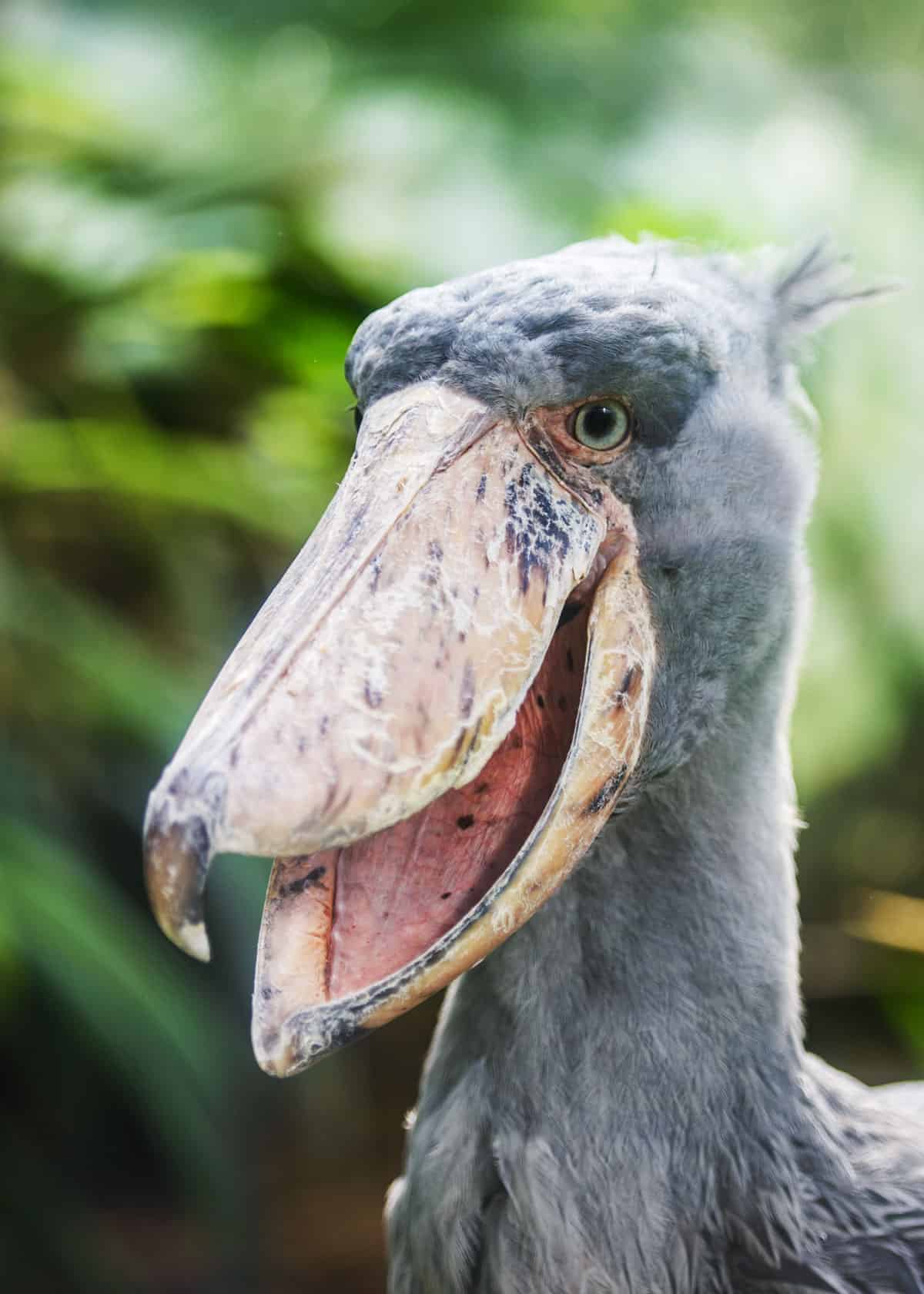

Fierce in the wild, the dauntless shoebill has been known to fight Nile crocodiles to get to their delicious babies, and to fraternize with hippos whenever possible, as the sheer enormity of hippos forces yummy shoebill snacks to the water's surface. Stoic loners – there are only about 3,300 to 5,300 individuals left in the wild – the shoebill stays mainly in its own bailiwick, flying (a mere 150 flaps per minute) anywhere from 500 to 1,000 feet (152 to 305 meters) at a time, with most flights in the 65-foot (20-meter) range. While the momma shoebill will lay two or three eggs, only one chick will survive, as the eldest offspring has a Darwinian dark side and, alas, kills its siblings. The Shoebill Storks nest in the ground, in a high and dry place.

Shoebill Stork Breeding Shoebills are largely solitary birds that only commune to mate and raise their young afterward. Both partners participate in building their nest, which is a kind of floating barge that can be as large as 10 feet wide (3 meters) and 9 feet (almost 3 meters) deep. It can remain silent in place a long period of time while waiting for prey to enter its sight. They use the sharp edges of their bill to decapitate the prey. They are regarded as ferocious predators and can prey on small crocodiles, lungfish, and monitor lizards as well.

The weight of the shoebill stork ranges between 9-16 lb. Weighing anywhere from 12 to 15 pounds and standing up to 5 feet (1.5 meters) tall with a wingspan that can reach 8 feet (over 2 meters), this steely-eyed, aloof and gawky bird hangs out in reedy wetlands where it can nosh on its favorite foods, namely lungfish, tilapia, catfish, frogs, snakes, monitor lizards and baby crocodiles – all of which it can snatch and swallow whole or tear through and decapitate easily with its badass, hollow, pelican-like 7-inch (18-centimeter) beak.Ī monogamous bird that can live up to 35 years, the shoebill finds its mate at a young age and aggressively defends its partner against rivals. The average height for a shoebill stork ranges between 3.3-4.6 ft while the wings can extend up to 7.64 ft.


 0 kommentar(er)
0 kommentar(er)
